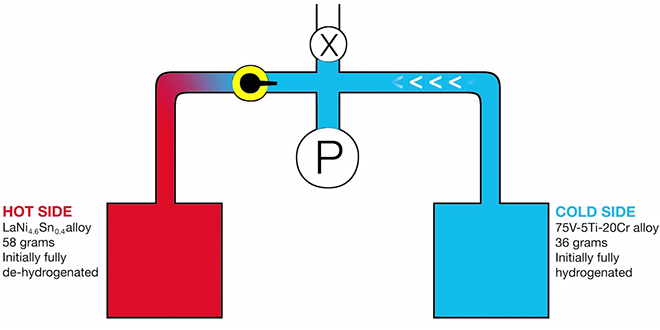EV heating and cooling presents a dilemma: how to keep a vehicle’s occupants comfortable without draining the battery? Engineers are working on various solutions, from heat pumps and adsorption chillers to passenger-focused AC and heat.
A group of researchers from the University of Utah, HRL Laboratories and GM Global R&D has developed a novel approach – a thermal battery based on advanced metal hydrides.
The system, which is described in a paper in the Journal of Alloys and Compounds, has a hot side and a cold side, composed of thermodynamically matched metal hydrides. When the thermal battery discharges, the metal hydride on the cold side (made of TiV0.62Mn1.5 alloy) releases hydrogen gas and cools. This hydrogen flows to the hot side, where it is absorbed by the other metal hydride (catalyzed MgH2).

The cold hydride reaches temperatures below 0° C (32° F), while the hot hydride reaches a maximum temperature of 75° C (165° F).
Source: University of Utah via Green Car Congress


















































































